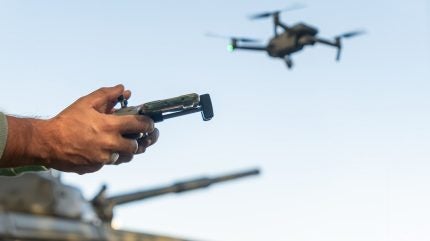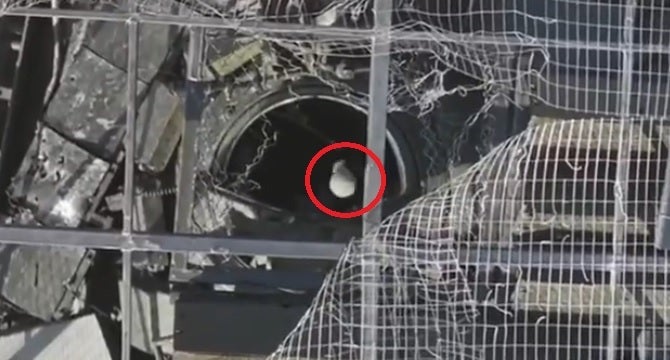
The Ukrainian Ministry of Defence (MoD) has more than doubled the number of DJI Mavic drones it had acquired for use in operations against Russian forces, announcing on 21 May 2024, the purchase of a further 4,200 BPAK DJI Mavic 3E small uncrewed aerial systems (UAS).
According to the MoD’s Lethal Defense Acquisition Agency the total value of the contracts amounted to $27.4m (Hrv1.1bn). Together with previous purchases, the number of DJI Mavic’s contracted by the Lethal Defense Acquisition Agency stands at 8,200 sets (7,200 DJI Mavic 3E and 1,000 DJI Mavic 3T), the MoD stated.

Discover B2B Marketing That Performs
Combine business intelligence and editorial excellence to reach engaged professionals across 36 leading media platforms.
“Drones have evolved into an essential component of modern warfare. They strengthen our defence capabilities, increasing military operations’ effectiveness. Therefore, the procurement of drones is one of the main tasks of the Ministry of Defense,” said Deputy Defense Minister of Ukraine Dmytro Klimenkov.
“Our troops must be provided with everything necessary in a timely manner to have the ability to respond to any threats from the enemy.”
According to the results of auctions on Prozorro, the Ukrainian MoD stated that the average price for one UAS was $3,300 for a DJI Mavic 3E with three additional batteries and a charger, and $4,800 for a DJI Mavic 3T with three additional batteries and a charger.

The Prozorro auction site was set up to enable Ukrainian state-owed assets to be sold into the private sector, focusing on land, property, and vehicles. According to the Prozorro sites the enterprise has been structured as a joint-stock company owned and operated by the Ministry of Economy of Ukraine.

US Tariffs are shifting - will you react or anticipate?
Don’t let policy changes catch you off guard. Stay proactive with real-time data and expert analysis.
By GlobalData“Through these acquisitions alone we were able to save over 65 million hryvnias (Hrv) from the estimated cost,” said Maryna Bezrukova, director of the Lethal Defense Acquisition Agency.
In addition, the Ukrainian MoD’s Defense Procurement Agency conducted auctions for an additional 4,000 DJI Mavic 3E and 1,500 DJI Mavic 3T BPA as of 20 May, with contracts “expected to be signed”.
Ukraine drone use follows earlier trends in Nagorno-Karabakh
While drones have been used effectively by non-state actors in numerous insurgencies around the world, their widespread use in Ukraine is not the first time such capabilities have been seen – and their impact clearly measurable – in a state-on-state conflict, with the 2020 Nagorno-Karabakh war between Armenia and Azerbaijan seeing small UAS utilised to conduct ISR and aid artillery range finding.
“Azerbaijan was largely using drones for observation and fire correction purposes, rather than, for example, attack drones that fire missiles,” explained Wilson Jones, defence analyst at GlobalData.
“These drones were used to make conventional artillery much more accurate. Most Armenian losses were from artillery bombardment, and they had no effective countermeasures,” Jones added.
Following the invasion of Ukraine in February 2022, Kyiv has sought to acquire military-capable platforms for use by its military and utilised a range of methods for fund raising and capability acquisition. The use of Prozorro as one such gateway has also highlighted the role of small UAS/drones on the battlefield, proliferating to provide intelligence, surveillance, and reconnaissance (ISR), as well as strike roles.
In the ongoing Ukraine war, countless videos are available on social media showing the devastating ability of small UAS operating as first-person attack drones to target and destroy armoured vehicles, with both sides using such capabilities.
Small UAS are also seen to be used to aid targeting of indirect fires, conducting ISR across battlelines, and also conduct rudimentary, but lethal, direct fire attack using underslung grenades.
The need to acquire thousands of small UAS also points to their inherent vulnerability, with commercial-grade systems far more easily jammed when operating in an electronically contested environment.
However, the low platform acquisition cost, typically under $5,000, means small UAS are an extremely effective way to perform a role, able to inflict or aid in the damage or destruction an order of magnitude greater than their initial cost.





